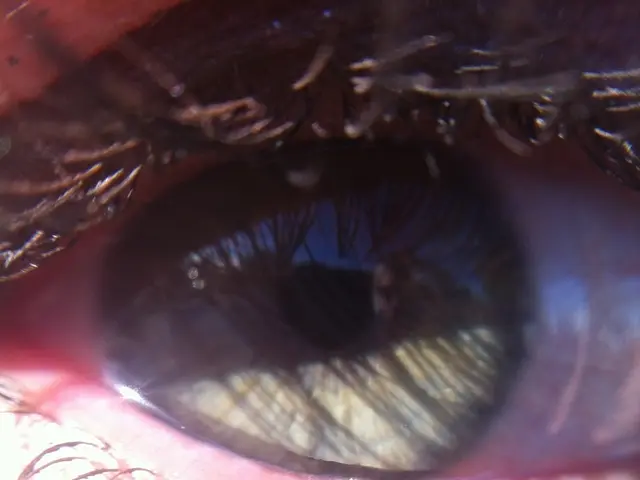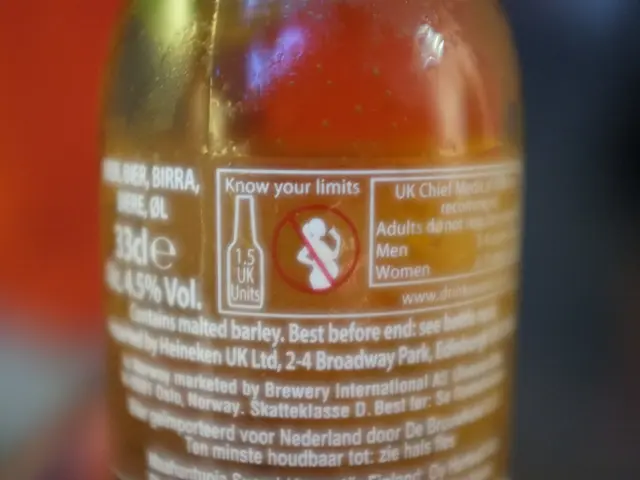Sudden severe rosacea flare-up: Underlying triggers, visible signs, and potential remedies
A Rare and Severe Skin Condition: Rosacea Fulminans
Rosacea fulminans is an uncommon, inflammatory skin disorder marked by a sudden onset of severe symptoms principally affecting the central face, including the forehead, nose, cheeks, and chin. This condition, also known as pyoderma faciale, presents as flushed, swollen, and painful nodules and pimples that may coalesce, differing from rosacea or acne in their severity and rapid emergence.
Women of childbearing age are primarily affected by rosacea fulminans, although the precise cause remains elusive. An extensive review published in 2020 suggests a possible connection between this condition and other health issues, such as inflammatory bowel disease and pregnancy. Moreover, prior experience with rosacea may increase the likelihood of developing rosacea fulminans. Potential triggers include emotional stress, hormonal fluctuations, certain medications, as well as specific dietary factors, according to a 2021 literature review.
Treatment options for rosacea fulminans may encompass oral isotretinoin, a prescription-only acne medication, and corticosteroids, either in oral or topical forms. In some cases, antibiotics combined with corticosteroids and lifestyle adjustments can help alleviate symptoms. Given the potential for triggers, a healthcare professional may recommend strategies to identify and avoid aggravating factors, such as reducing stress through mindfulness meditation, deep breathing exercises, regular exercise, and journaling, making dietary modifications, like limiting alcohol, and employing gentler skin care products on the face.
Individuals should consult a dermatologist or healthcare professional if they experience symptoms beyond typical rosacea or acne, such as large, tender nodules, abscesses, or notable facial discomfort; have a sudden onset of symptoms; have symptoms that persist or worsen despite trying over-the-counter medications or rosacea therapies; notice eye irritation or inflammation; or experience systemic symptoms, like fever or fatigue. Early medical attention is essential for accurate diagnosis and effective treatment, helping manage symptoms and lower the risk of complications associated with rosacea fulminans, such as scarring and infections, while potentially improving the overall quality of life.
In the absence of specific dietary triggers for rosacea fulminans, as evidenced by the available search results, alcohol is a recognized trigger for rosacea symptoms generally, and patients are advised to monitor and possibly avoid alcohol intake to help manage flare-ups. Keeping a food diary to identify and eliminate potential food allergens or triggers is also commonly suggested in rosacea management advice. While no direct evidence specific to the rosacea fulminans dietary triggers was found in the sources, the general advice for rosacea management can be applied to help manage symptoms effectively.
- Rosacea fulminans, a severe form of skin-care condition, requires medical attention when symptoms beyond typical rosacea or acne, such as large, tender nodules, abscesses, or facial discomfort, arise.
- A dermatology-based treatment plan may include oral isotretinoin, corticosteroids, and antibiotics, as well as lifestyle adjustments like stress reduction techniques, dietary modifications, and gentle skin-care products.
- Despite limited evidence for specific dietary triggers for rosacea fulminans, avoiding alcohol and maintaining a food diary to identify potential food allergens or triggers can be beneficial for managing rosacea symptoms in general.








